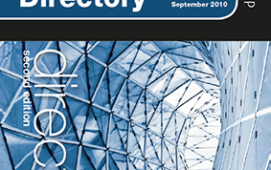
Global anti-money laundering and sanctions fines hit a record high of $5.7 billion in 2019 (compared to $3 billion in 2018 and $2 billion in 2017). Coupled with the growing threat of sophistication, and rising compliance costs, financial institutions are desperate for solutions to help them deter financial crime – and avoid massive penalties.
Oracle thinks it has the answer, with its newly upgraded suite of Financial Crime and Compliance Management products. Announced in February, the upgrade includes a new integrated analytics workbench that allows data scientists to run graph analytics, data visualizations, machine modelling, scenario authoring, and testing on all of their data in one place. The solution also now incorporates the ability to augment traditional rules-based behaviour detection models with machine-based models and 300-plus out-of-the-box customer risk indicators, which enhance the accuracy of models and reduce false positives; and contain embedded graph analytics visualizations and 30-plus pre-built graph algorithms for advanced case investigations, entity resolution, and discovery of hidden networks. Graph analytics capabilities also support network pattern analysis and deep learning to automate case decisions and provide recommendations to investigators.
“Financial crimes are increasingly more sophisticated as technology becomes more advanced,” says John Edison, VP of Financial Crime & Compliance Products at Oracle Financial Services. “Oracle continues to make strategic investments in the area of anti-money laundering and financial crime compliance management to help financial institutions successfully fight these threats.”
This is a strategic move – especially as it looks like global anti-money laundering fines could rise even higher going forward. On the back of the punishing penalties including a whopping $4 billion fine issued to UBS, a $1.3 billion fine for Societe Generale and a stinging $900 million penalty for ING, there is a broad expectation that this year Danske Bank could be fined up to $8 billion for money laundering in its Estonia branch (in possibly the largest money laundering case in history), while analysts also expect a significant slap on the wrist for Australian bank Westpac, following a recent money-laundering scandal linked to child exploitation.
“The message from regulators around the globe is loud and clear: improve anti-money laundering compliance or face significant fines and reputational damage,” warns Garima Chaudhary, Oracle Financial Crime and Compliance Management Specialist.
The firm has poured effort and investment into meeting this demand – including a recent slew of innovations to add to its traditional anti-financial crime enterprise products (which include Oracle Enterprise Case Management and Oracle Anti Money Laundering Enterprise Edition).
New advances include the Oracle Financial Services Anti Money Laundering Express Edition, based on a cloud-native architecture with integrated case management and architected specifically to cater to the compliance needs of small and mid-tier banks. The Oracle Financial Services Adaptive Intelligence Foundation for Anti Money Laundering augments existing rule-based investigation scenarios with adaptive customer behaviour-based machine models for more effective AML transaction monitoring and reduced false positives, while the firm’s Investigation Hub helps financial crime investigators to uncover and analyse hidden suspicious complex network patterns between entities using graph technology, and the Anti Money Laundering Event Scoring system offers smart ranking and prioritization of AML events using advanced modelling and machine learning tools.
In recent years Oracle has also invested heavily into strategic relationships with technology providers who can complement the company’s AML capabilities with technologies like RPA, Natural Language Processing, Adverse Media Search and more – including a September 2019 partnership with financial crimes risk management software company and machine learning specialist Quantifind, integrating the latter’s software-as-a-service (SaaS) offerings into the Oracle Financial Crime and Compliance Management platform to provide external data review and intelligent risk assessments. In January last year, Oracle also teamed up with Customer Risk Intelligence (CRI) solutions provider Arachnys, integrating the Arachnys cloud-native CRI platform into Oracle’s product suite and launching the Arachnys /Navigator, which enables analysts to dynamically screen for negative news and entity profile information for new customers at client onboarding and related parties within transaction monitoring investigations.
Subscribe to our newsletter




